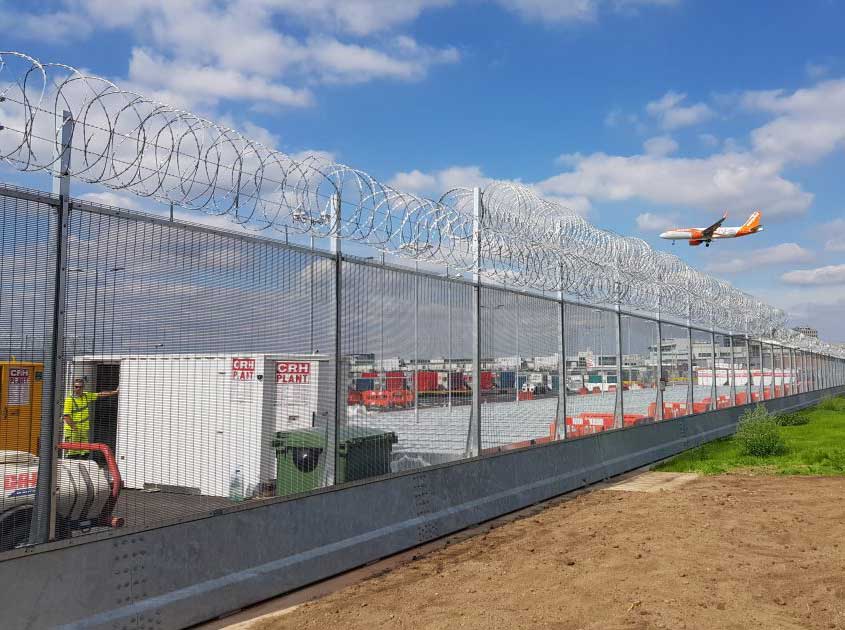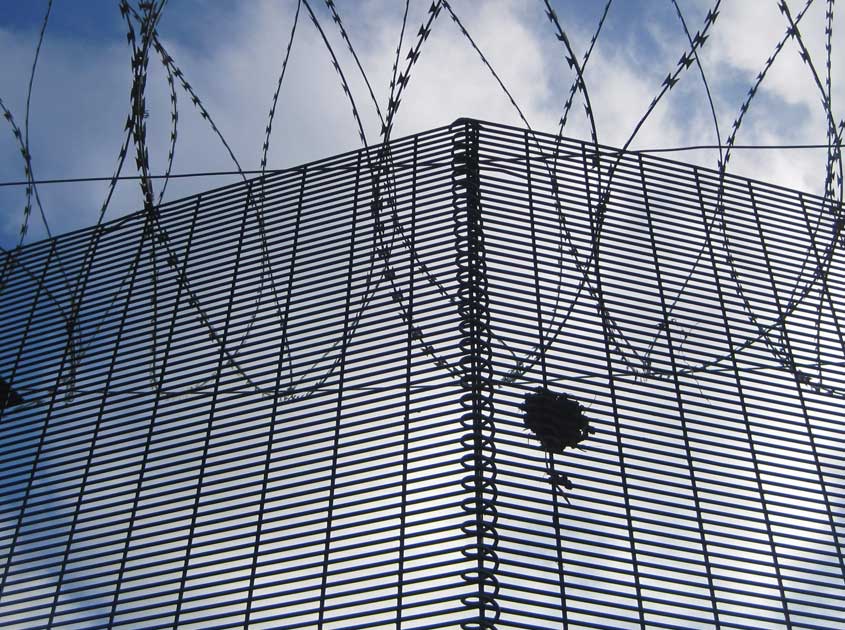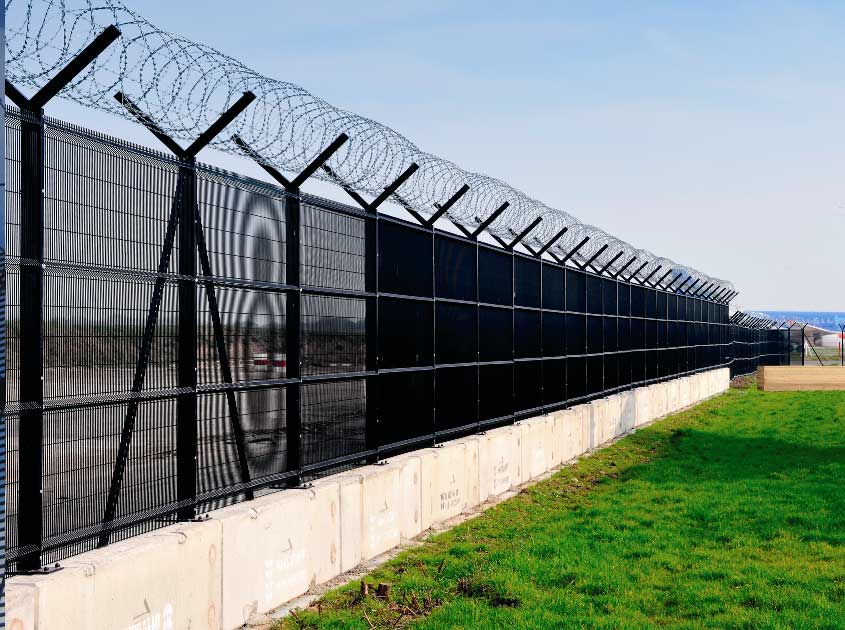- Home
- About Us
- Products
- Service
- Project
- News
- Contact Us
Pulished on Feb. 20, 2025
Airport Fence: Ensuring Security and Safety at Critical Transportation Hubs
Airports are some of the most critical infrastructures in the world, handling millions of passengers, valuable cargo, and sensitive equipment. As such, securing an airport is of paramount importance. One of the most effective ways to maintain airport security is through the installation of specialized airport fences. These fences not only safeguard the perimeter but also prevent unauthorized access, ensuring the safety of both passengers and aircraft. In this blog, we’ll take a deep dive into the features, benefits, and applications of airport fencing, explaining why it’s a must-have for modern airports.

An airport fence is a robust security barrier designed specifically for airports to protect sensitive areas from unauthorized access, trespassing, or potential threats. These fences are usually constructed from high-quality materials such as galvanized steel, welded wire mesh, or chain link mesh with specialized coatings for durability and resistance to corrosion.
Airport fences are typically tall (often exceeding 8 feet in height) and feature a tight mesh design to prevent climbing. In some cases, additional security features such as barbed wire, razor wire, and electronic surveillance systems are integrated to enhance the overall security of the airport perimeter.
Airport fencing is essential for maintaining security at any airport. Here are some of the main reasons why installing a high-quality fence around the airport is crucial:
Preventing Unauthorized Access
The primary function of airport fencing is to prevent unauthorized individuals from accessing restricted areas, such as runways, tarmacs, baggage handling zones, and maintenance areas. The fence ensures that only authorized personnel can enter these high-risk zones.
Deterring Intruders
Airports are high-security environments that require an effective deterrent against criminal activities. A well-installed airport fence acts as a visible deterrent to potential intruders, making it much more difficult for individuals to enter the airport grounds without detection.
Protection from Wildlife
Airports are often located near open fields or natural habitats, where wildlife such as birds, deer, or other animals may wander onto the tarmac. An airport fence helps prevent these animals from straying onto runways or taxiways, reducing the risk of accidents involving wildlife, such as bird strikes, which can be dangerous for aircraft.
Enhanced Security Features
Modern airport fences can be equipped with a range of additional security features, including:
Razor Wire: Razor wire is often installed at the top of the fence to make it even more difficult to scale. It serves as an added layer of protection to prevent intrusion.
Surveillance Cameras: Integrated with the fence, CCTV cameras monitor the perimeter for any suspicious activity, providing real-time security surveillance.
Motion Sensors: These sensors detect movement around the fence line, alerting security personnel to any unauthorized attempts to breach the perimeter.
Anti-Climb Mesh: The mesh design of the fence can be constructed to be difficult to climb, further improving its security.
Durability and Low Maintenance
Airport fences are designed to withstand harsh weather conditions, from extreme temperatures to high winds and heavy rain. They require minimal maintenance once installed, thanks to their durable materials and protective coatings, ensuring long-term reliability and cost-effectiveness.
Compliance with Regulations
Airports need to adhere to strict regulations, including security and safety protocols set by aviation authorities. Airport fencing ensures compliance with these regulations, including those that mandate secure perimeters for sensitive airport zones. International and local airport safety standards are often met with the installation of proper fencing systems.

Airport fences have diverse applications, with each airport area requiring a specific type of fencing based on the security level needed. Here are some common applications:
Perimeter Fencing
The most basic and essential application of airport fencing is around the perimeter of the airport. This fence secures the entire area from unauthorized access and provides a clear boundary for the airport's grounds. It serves as the first line of defense against intrusion.
Runway and Tarmac Fencing
Around the runways and tarmacs, where aircraft are parked and take off, airport fences need to be extra secure. These fences are designed with tighter mesh to prevent anything from crossing onto these critical zones. In addition to preventing unauthorized access, they help keep animals and debris away from the aircraft.
Air Traffic Control Towers
Air traffic control towers are vital to the operation of any airport. These towers need to be highly secured to prevent any disruption to air traffic operations. Airport fencing is used around these towers to maintain their safety and prevent potential threats.
Cargo and Baggage Handling Areas
Fencing around cargo and baggage handling zones helps to secure valuable shipments and personal belongings. This fencing also limits access to these areas, ensuring that only authorized personnel can handle or transport goods.
Maintenance and Storage Areas
Airports often have maintenance and storage areas for aircraft servicing, parts storage, and other operations. Fencing around these areas prevents unauthorized personnel from gaining access to tools, aircraft, or other sensitive materials.
Passenger Screening Areas
While passenger screening areas are primarily located indoors, airport fences can be used to secure the outdoor access points to these areas. Ensuring that only ticketed passengers or authorized personnel can enter these high-traffic zones is critical for airport security.
Modern airport fences are designed with a range of features to enhance both security and functionality:
Height and Strength
Airport fences are typically taller than standard perimeter fences, with heights ranging from 8 to 12 feet or more. This height prevents unauthorized individuals from climbing over the fence. The wire mesh used is also high-strength, ensuring that the fence can withstand forceful attempts to breach it.
Corrosion Resistance
Given the environmental conditions airports face—constant exposure to the elements—airport fences are made from galvanized or coated steel to resist corrosion. This ensures the fence remains functional even in areas with extreme weather conditions, such as coastal areas with high salt content in the air.
Tight Mesh Design
The mesh design of airport fences is typically very tight to prevent climbing. The openings are small, reducing the chances of someone gaining a foothold to scale the fence. The welded mesh also provides added strength and security.
Easy Integration with Technology
Modern airport fences can be integrated with various security technologies. For instance, motion sensors, thermal cameras, and infrared detection systems can be seamlessly connected to the fence for real-time monitoring.
Aesthetic and Environmental Considerations
While security is the top priority, modern airport fences are also designed to blend in with their surroundings. For example, fences can be customized with green or neutral coatings to reduce the visual impact, especially in environmentally sensitive areas or urban environments.

The installation of airport fencing is a specialized task that requires expertise. Here’s a general guide to the process:
Site Survey and Planning:
A thorough site survey is necessary to assess the perimeter’s layout and ensure that the fencing system is designed to meet security needs and comply with regulations.
Post Installation:
The fence posts are installed at regular intervals, and the fence itself is mounted securely to the posts using welded wire mesh or other materials.
Integration with Security Systems:
If additional security features such as surveillance cameras, motion sensors, or razor wire are required, these are integrated during the installation process.
Regular Maintenance:
Once installed, the fence requires minimal maintenance, but it’s important to conduct routine inspections to ensure it remains secure and functional. Periodic cleaning and checking for corrosion or damage can help extend the life of the fence.
Airport fences play a critical role in maintaining the security, safety, and functionality of airports worldwide. With their ability to prevent unauthorized access, protect aircraft, and integrate with advanced security technologies, they are a vital part of any modern airport's infrastructure. Whether you're building a new airport or upgrading the security of an existing one, investing in high-quality airport fencing is essential for ensuring long-term safety and operational efficiency.
If you’re looking for a reliable airport fencing solution, choosing a reputable supplier with experience in airport security systems is crucial. By selecting the right materials and security features, you can enhance the protection of your airport and ensure that it remains safe and secure for passengers, staff, and aircraft.